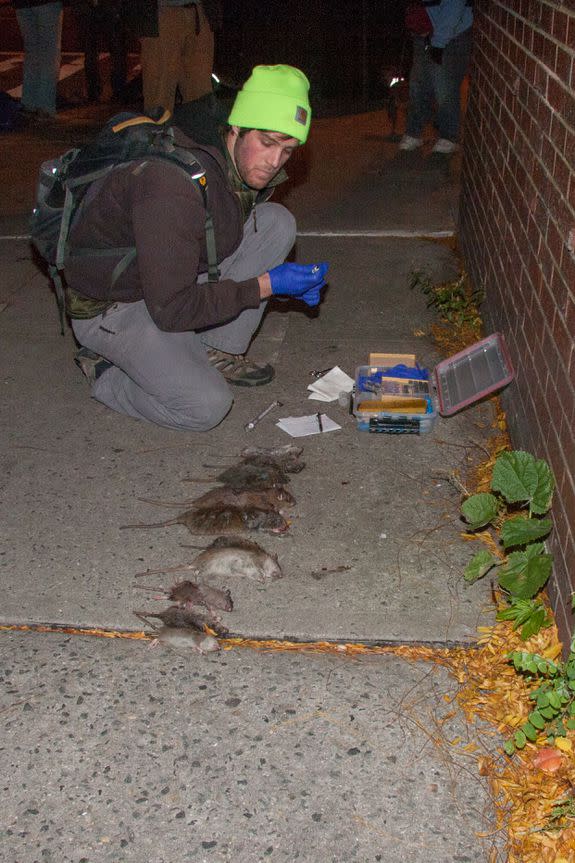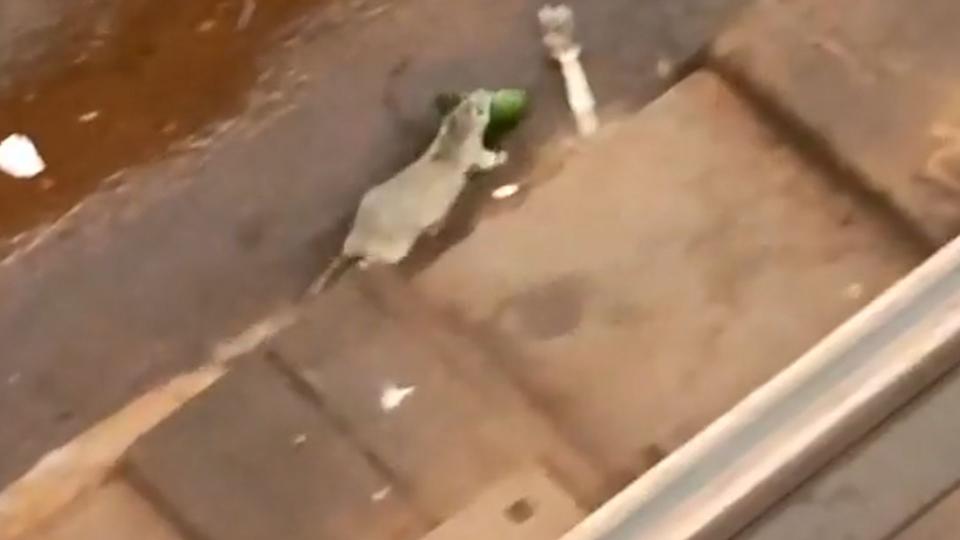In NYC, uptown and downtown rats don’t mix

It turns out rats, like New Yorkers, are partial to their neighborhoods.
An ecology researcher has been tracking brown rats all over Manhattan for nearly the past three years. Fordham University grad student Matthew Combs found that the rodents stick to certain areas: you'll find uptown rats and downtown rats, with a break in midtown. The two groups don't mingle much.
SEE ALSO: These giant 'HeroRATS' are helping to make the world a safer place
He came to this conclusion only after trapping hundreds of rats and studying their genetic makeup. He was then able to notice genetic differences between rats from different parts of town. He also found that rats only move about 656 feet from where they're born — that's about one Manhattan block.
His findings about the geographic separation after looking at 262 rats was published last week in the journal Molecular Ecology. Based on his research on the geographic movements of rats and their DNA, he also found that Manhattan rats were similar to rats originally from Great Britain and are likely their descendants.
Combs hopes the beginning of his research will help people think differently about rats. "That's natural history right there," he said in a Thursday phone call. "I like to think every New Yorker has a rat story."
Back to his findings, Combs is most surprised by the geographic groupings. The midtown break appears to be based on the layout of the sewer system and population density. Midtown in particular is filled with buildings and not many residential buildings. That translates o fewer habitats for rats. Combs said rats in other parts of Manhattan have it easy and may contribute to the myth of the giant NYC rat. "Rats have to do very little work to get their food," he said about rats that raid apartment building garbage piles.
To study the rats, Combs had to find them. "We wanted to find as many rats from as many different places we could," Combs said in a phone call Thursday. His lab had a plan and picked up samples throughout the city.
With the help of this crowd-sourced "rat map" and old-fashion tracking of poop, garbage remnants, chew marks, and neighborhood knowledge, Combs basically helped the city with its rat problem. But his goal wasn't to eradicate the public health nuisance, but to use the rats for their DNA — which he got from cutting off about an inch of the rats' tails.

Image: matt combs
Fordham University profiled Combs' work in June and wrote about his tracking process: "He often receives help from residents hanging out on sidewalks or stoops who are only too happy to tell him where the rats live in their neighborhoods—sometimes even letting him into their backyards to trap them."
The next part of Combs' research is looking at genetic data from rats from other cities, including Vancouver, New Orleans, and Salvador, Brazil.
WATCH: Subway rat seizes free avocado, because who wouldn't


